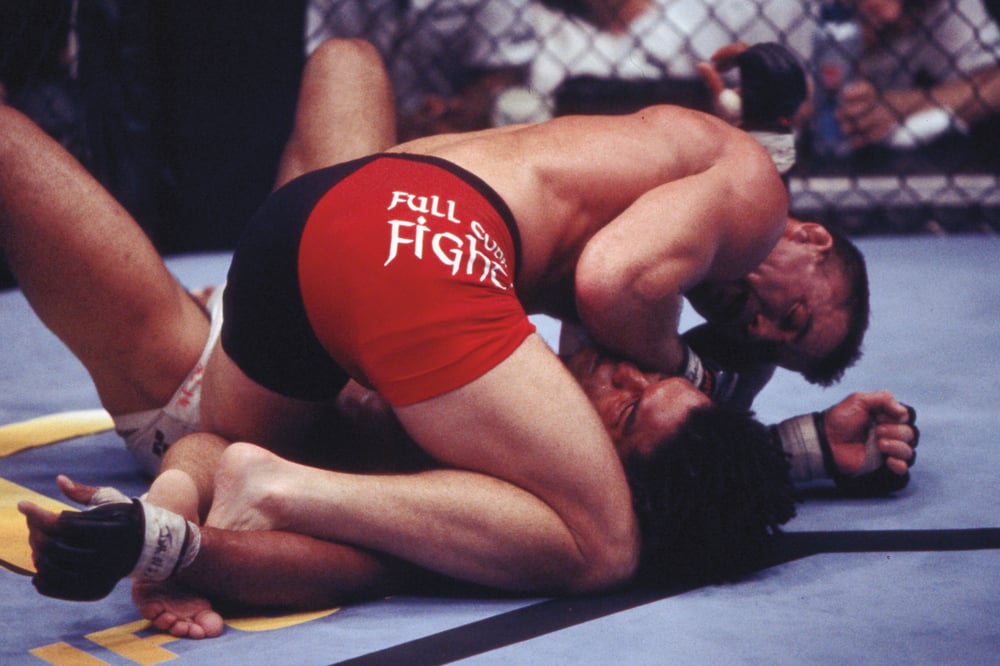
Issue 045
January 2009
The explosion of MMA around the globe has opened up a multi-million pound athletic equipment industry specifically aimed at fighters and fight enthusiasts.
With so much business potential, the producers of MMA-orientated kit are witnessing an incredibly fast-paced evolution in consumer trends as the phenomenon bursts into the mainstream.
Managing director of Fightshop.com, Simon Crowther is better placed than most to monitor themes within the burgeoning market. “What has really rocketed for me are sales of the solid, basic equipment,” he said resolutely. “Solid, basic kit, that just doesn’t go wrong.”
According to Crowther, the explanation for this is credit-crunching simple. “The target demographic for fight equipment is 16-30 year old males, young lads who don’t generally have huge amounts of money to spend, especially not at the moment. If you are going to spend £150 on kit, you want something that will last.
“What I call gimmick equipment does appear from time to time,” he added, citing the Shock Doctor groin guard as a prime example. “However, I’m not yet stocking these things, I have never had any requests or demand for it. At the end of the day, a full-on knee in the nuts and it breaks! So people are going back to the traditional metal Thai groin guard – a piece of cast iron – then a solid knee in the nuts hurts them, not you! Whatever comes out in terms of this fancy, gimmicky kit, people are coming back to the basics, brands like Windys and Twins.”
While many of the traditional Thai boxing brands have the benefit of half a century’s experience in the industry and have had time to modify and remould their products, due to the relative youth of MMA the market for specific sparring equipment has not yet had the chance to refine their products to the same degree.

At the forefront of the drive to create a genuinely fit-for-purpose MMA glove is managing director of Grapple Wear, Parhom Rahravan. With the help of numerous UK gyms, he set out to expose the failings of what was currently on offer. “Some fighters were having problems with damaging their wrists, or not having enough protection on the thumb. We started from scratch, when you look at our sparring gloves, they are completely different to most of the others.”
“Obviously, it takes time,” he said of the developmental process. “We could have released the glove at least eight months before we did. Our trial and error was done in-house, rather than the customer receiving a product and then giving us feedback, but it was our choice to have something good. I want to be 100% proud and behind the product, knowing that we have done our utmost to produce the best glove we can.”
Nothing is more frustrating for a fighter than receiving and unnecessary cut in sparring; this point was not lost on Rahravan as he sought to eliminate the perennial problem with an innovative solution. “We wanted a glove that was safe for the face of your sparring partner. On the front side of most gloves, the stitching is where the contact occurs with the face, and the problem is that that ends up causing little points – so we have just got rid of that completely on our gloves, the stitching is on the inside.”
According to Rahravan, we will see a technological revolution in MMA equipment over the coming years. “I think that it will definitely go down that path more and more, it’s becoming very competitive and you need better and better products every day. If you look at running, back in the day, there were just simple trainers; now if you look at these new, super-advanced running trainers for £300-£400, so much effort and technology has gone into the design – MMA is going down that path as well.”










